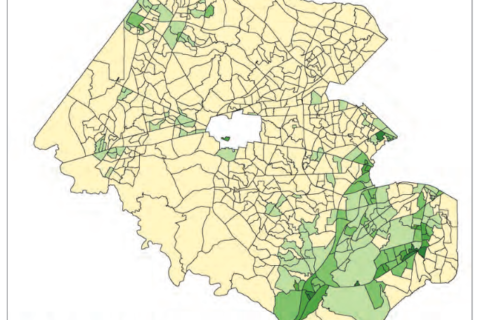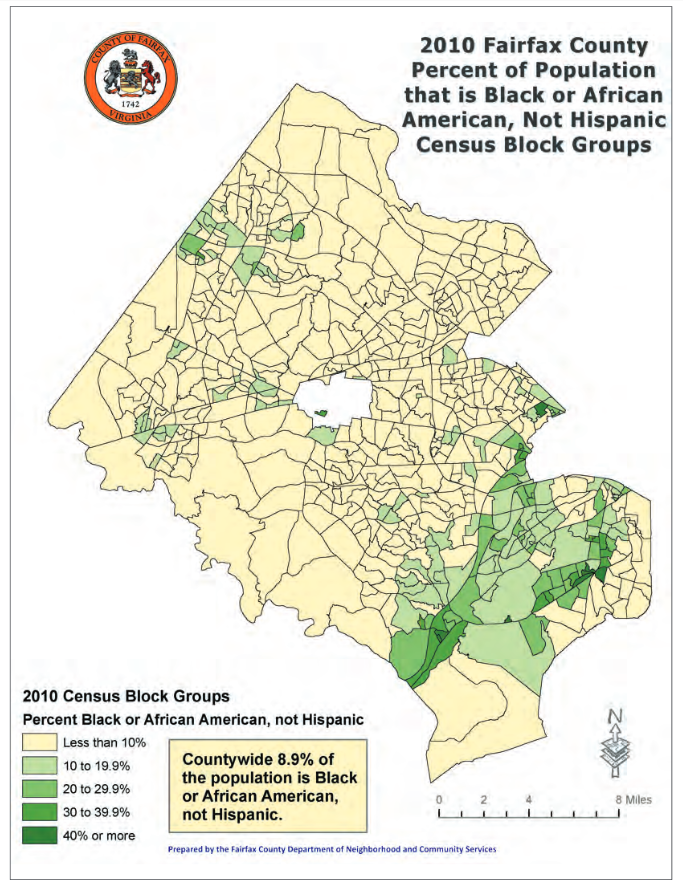
WASHINGTON — A new report on fair housing in Fairfax County, Virginia, finds the area has room to improve on its efforts to make housing accessible to any resident regardless of their race.
The report, released last week for public comment, found that discriminatory lending practices and the county’s development policies have limited the housing choices available to its black population.
Pockets of black neighborhoods are clustered in the southeast corner of the county and to the west near Dulles International Airport. In comparison, Asian, Hispanic and white residents live in neighborhoods throughout the county.
In more than 82 percent of the county’s census tracts, the proportion of black households is significantly less than would be expected if black households were able to live where they could afford to live in Fairfax County, the report concludes.
While several Fairfax County supervisors raised concerns about certain details or recommendations in the 309-page report, Chairman Sharon Bulova said the higher rate of rejected mortgage applications for minority groups and the higher rate of subprime or other risky loans given to minority borrowers compared to non-Hispanic white loan applicants raise significant concerns.
“There’s some interesting, interesting stuff in here, especially regarding inequity when it comes to financing of mortgages, for instance, and some of the lenders that do not have very ethical practices,” she said.
Among 18 impediments to fair housing in Fairfax County, the report cites a lack of non-white realtors, the county’s limited authority to increase affordable housing and the “daunting task” of reforming the region’s real estate market so black homebuyers or renters could afford to live anywhere they choose, and not be limited to majority-black neighborhoods.
According to the study, Montgomery and Prince William counties in Maryland have the closest county-wide diversity ratios in the region to what would be expected when adjusting for what households can afford, although Prince George’s County and Charles County, also in Maryland, have a growing proportion of black residents.
The report describes two different housing markets in the region: one for black buyers and renters and one for everyone else.
“It will take many generations of incremental change to transform the dual housing market into a unitary, genuinely free housing market in which households of every race and ethnicity consider housing they can afford throughout Fairfax County and neighboring jurisdictions,” the report finds.
 For Fairfax County, the report recommends steps to create more affordable housing such as reducing the number of parking spaces required for each unit, requiring affordable units in more developments, and rezoning more land to allow for multi-family developments.
For Fairfax County, the report recommends steps to create more affordable housing such as reducing the number of parking spaces required for each unit, requiring affordable units in more developments, and rezoning more land to allow for multi-family developments.
“I think one of the challenges is that in Fairfax County we say we are always good, and we are not always as good as we can be,” Supervisor Cathy Hudgins said.
The issues go beyond housing, Hudgins says, and should be factored into the county’s efforts to develop and redevelop mixed-use communities.
A household with Fairfax County’s median income —$112,102 — could likely afford a median condo, but not a median-value, single-family home in 2014, the report found. More than 43 percent of renters and more than a quarter of homeowners with a mortgage spent more than 30 percent of their income on housing.
The report, required because the county receives federal housing funding, is meant to show where the county stands to measure potential improvements in coming years.
“How do we prioritize the items that are in there? Because we can’t do everything, but we can do some things and we can start somewhere,” Supervisor Dan Storck said.
The report suggests increasing outreach to minority groups to emphasize the housing options in Fairfax County and to white residents and potential residents about the opportunities in racially-integrated neighborhoods. It also recommends changes to improve treatment of disabled residents, and to allow manufactured housing in all residential areas of the county.
After public comments, the board is due to receive the final report Oct. 24.
“If we want to be a leader in protecting our residents and making sure that fairness is at the table, there are some things we may have to do that maybe we relied on others to do in the past. But as a county we’re going to have to step up our game and deal with to be the type of inclusive county that we want,” Supervisor Jeff McKay said.







